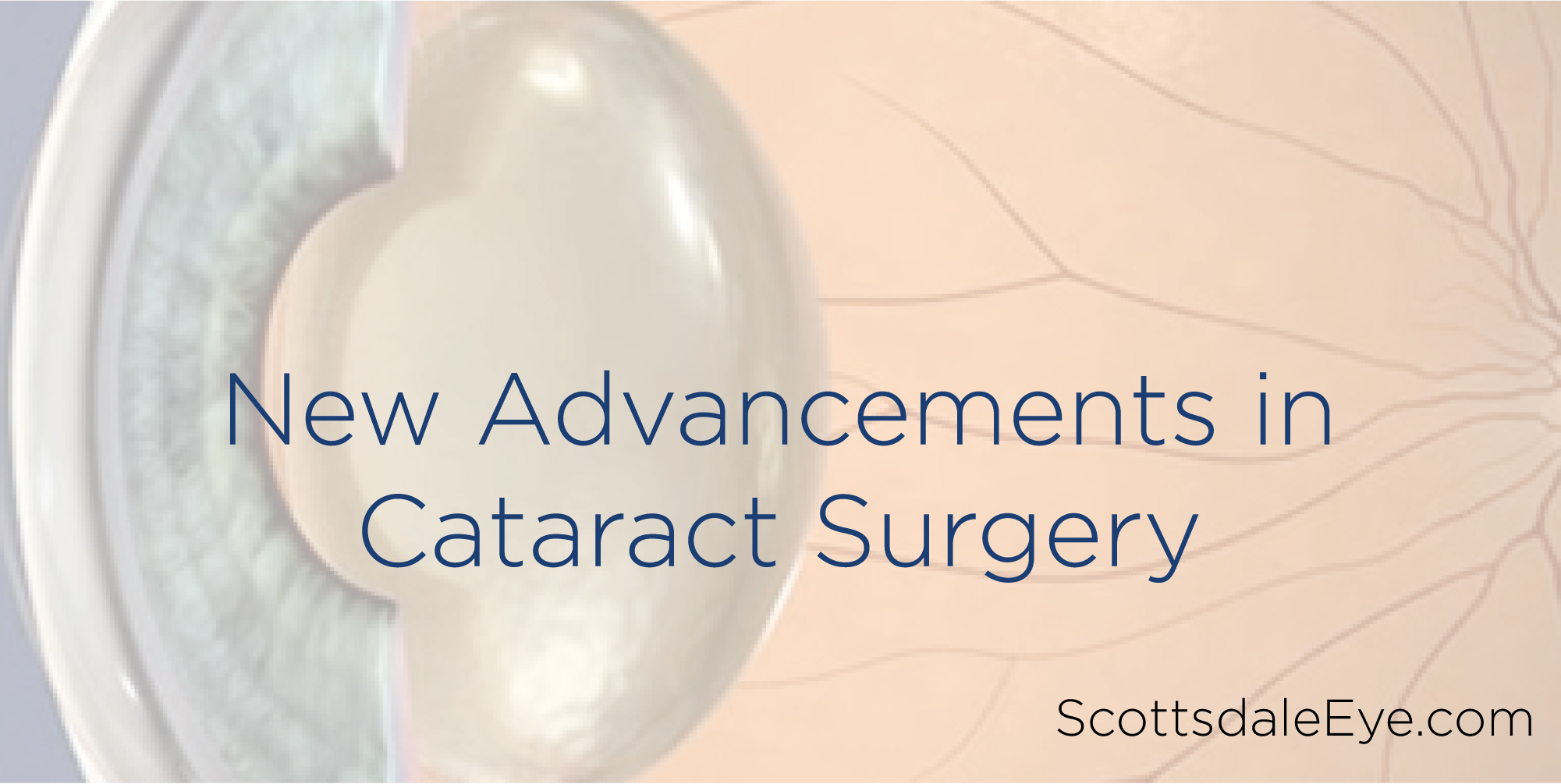At Scottsdale Eye Physicians and Surgeons we strive to offer the best technology for our patients. We are excited to share some of the recent advancements in Cataract Surgery. When performing Cataract surgery, the patient may choose a blade-less surgery procedure with the use of the femtosecond laser. The femtosecond is a cold laser that uses a series of very brief pulses to make incisions in tissue without using a blade. Each pulse is only a femtosecond in duration, which is one-millionth of one-billionth of a second. It is the same laser technology that has been used so successfully in LASIK procedures for over 15 years.
The machine first scans the eye and creates a 3-D computer image. This image is then used by the laser to quickly create customized corneal incisions at just the right depth and placement, create the incisions on the front of the lens, and soften the cataract in preparation for removal. The laser can also treat astigmatism, reducing the dependency on glasses or contact lenses. The laser portion of the cataract surgery requires only topical anesthetic, and takes about 3-4 minutes from start to finish. The patient is then moved to a conventional operating room to complete the cataract removal.
The precision and architecture of the incisions made by a femtosecond laser is far greater than can be achieved by manually using metal or diamond blades, like in the past. This greater precision allows more accurate centering of the intraocular lens implant, faster healing, and more predictable results. Because the laser pre-softens the cataract, it lowers the risk of surgery complications during removal of the cataract. The femtosecond laser allows surgeons to achieve the safest, most consistent visual outcome for their patients.
A major advancement last month makes it even better. The femtosecond laser platform Dr. Kilpatrick uses (LensAR) now utilizes a pre-operative corneal scan that loads data wirelessly right into the laser. The Cassini Corneal Shape Analyzer takes measurements quickly and painlessly, a little like getting a photograph taken of the eye, and is done at the surgery center a few minutes before the patient receives their femtosecond laser treatment.
When the surgeon makes an incision in the cornea to do cataract surgery, that incision changes the orientation and amount of the patient’s astigmatism. The Cassini uses a special formula to program the femtosecond laser to automatically correct for the surgeon-induced astigmatism.
The Cassini also “registers” the appearance of the iris so that the astigmatism measured while the patient is upright can be accurately corrected when the patient is lying down for surgery. This is important because the human eye often rotates a little when we lie down, which could make the astigmatism treatment less precise.
Finally, the Cassini measures the density of the cataract, which allows the femtosecond laser to tailor the amount of cataract softening energy used. Now the surgeon can lower the laser energy on some patients who don’t need as much, and increase it on others to get better softening.
Although there are other femtosecond laser platforms now being used, none of the others offer the marriage with the Cassini Corneal Shape Analyzer equipment. Dr. Dennis Kilpatrick is one the first cataract surgeons in Arizona to start doing femtosecond cataract surgery in March 2013, and he continues to offer the cutting edge technology to his patients.
For more information about Cataracts and Cataract surgery Please visit our website ScottsdaleEye.com or call 480-994-1872 to make an appointment!


